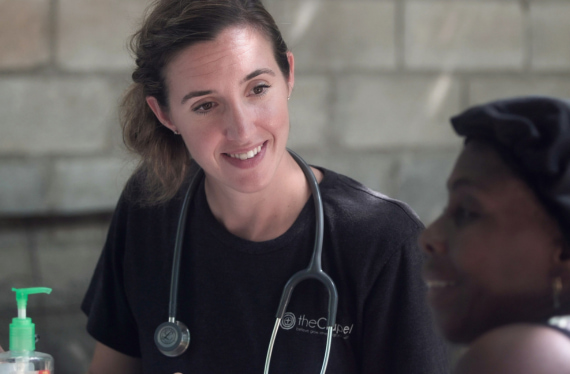As the cosmetic industry grows, so does the need for well-trained professionals who can meet patient expectations. One of the best examples of this is the rising demand for nurses well-versed in injectables, with over nine million Botox treatments administered globally each year.
But what exactly is Botox, and what kind of training should you consider to enter the medical aesthetics industry?
What Is Botox?
Botox is the brand name for a specific neurotoxic protein. When used in very small, controlled doses, Botox can temporarily paralyze muscles by blocking the nerve signals that cause them to contract. This muscle relaxation smooths out wrinkles and fine lines, which has made Botox a popular choice for patients who want to appear more youthful.
“There are multiple kinds of neurotoxins on the market, with Botox being the brand name of one of them,” says Sharon Higgins, Interim Carol A. Donovan Endowed Dean of Nursing at Regis College. “And while Botox is only one option, it’s important for aesthetic nurses to understand what they’re injecting and what's out there in the market.”
Administering neurotoxins, like Botox, is a delicate procedure that only a small handful of medical professionals are qualified to perform. Some of these positions include:
- Registered nurses
- Physician assistants
- Advanced practice nurses
- Physicians
- Dentists
Administering Botox isn’t just about the ability to perform injections. It requires a solid foundation in medical education, appropriate licensure, and specialized training. Here are the key steps and requirements for healthcare professionals who want to learn how to administer neurotoxins like Botox.
What’s Required to Administer Botox?
Licensure as a Registered Healthcare Professional
After completing a nursing program, passing the National Council Licensure Examination (NCLEX) is essential to becoming a licensed RN, which verifies that you’ve met the required standards to practice safely and effectively.
“As long as you have the licensure requirements, you can legally practice,” Higgins says.
Understanding and complying with licensure in the state you hope to work in is crucial for ensuring legal practice in medical aesthetics. Therefore, it’s important to stay informed about your state’s specific regulations to maintain compliance and uphold the highest standards of patient care.
Neurotoxin Certification
In addition to basic nursing education and licensure, many states and employers require nurses to complete specialized training in neurotoxin administration and cosmetic procedures.
“There should be some baseline knowledge of medical aesthetics material and then a certain level of hands-on training before injecting patients with anything,” Higgins adds.
This additional certification ensures that nurses are equipped with the specific skills and knowledge needed to safely and effectively administer neurotoxin and manage any potential complications. The combination of a nursing program, licensure, and specialized training helps maintain high standards of patient care and safety in the field of medical aesthetics.
Five Things to Expect to Learn From Botox Training
1. Patient Assessment and Consultation
A vital part of neurotoxin training is learning how to properly assess patients and conduct consultations. This involves understanding the patient's medical history, aesthetic goals, and any potential contraindications.
Effective consultation skills ensure that the treatment plan is tailored to each patient's needs and that they have realistic expectations about the results.
“Understanding and developing these consultation skills are essential,” Higgins says. “For example, you need to document patients’ medications and whether they’re contradictory to aesthetic medicines. There’s a lot of other factors though. So it's bigger than what you may think.”
For example, there are certain medications that can negatively interact with Botox, such as certain antibiotics, muscle relaxants, and blood thinners. As a result, aesthetic nurses need in-depth medical aesthetics training to understand these nuances before administering neurotoxin to patients.
2. Facial Anatomy
Understanding facial anatomy is essential for administering neurotoxin safely and effectively.
As a result, training programs cover the detailed anatomy of the face, including the muscles, nerves, and blood vessels. This knowledge helps practitioners identify the precise injection sites to achieve the desired results while minimizing risks.
"Much of medical aesthetics education focuses on facial anatomy at a much higher level than what many students get in a typical standard anatomy class in nursing school,” Higgins adds.
Given that neurotoxin targets specific muscles to reduce wrinkles, knowing the exact location and function of these muscles is critical. An advanced understanding of facial anatomy also aids in avoiding complications such as asymmetry or unintended muscle paralysis.
3. Navigating Injectable Complications
Even with the best techniques, injectable complications can occur. Therefore, understanding and managing potential complications is crucial in Botox training.
This is because practitioners need to understand how to treat adverse outcomes, determine who is a suitable candidate for the procedure, and recognize contraindications.
“How to treat adverse outcomes is a critical part of training,” Higgins says.
Practitioners learn to recognize and manage potential complications, such as:
- Bruising
- Swelling
- Adverse reactions
This comprehensive approach ensures that they are well-prepared to handle any adverse situations that may arise, providing safe and effective care to their patients.
4. Appropriate Injection Techniques
Proper injection techniques are at the core of any Botox training program. Nurses can learn various techniques for different treatment areas to achieve natural-looking results.
This includes understanding the correct depth, angle, and amount of neurotoxin to use, which can vary based on the specific facial muscles being targeted. Training also includes hands-on practice, often with live models, to help practitioners gain confidence and precision.
“Getting that hands-on experience and really working with a real person’s face and skin is good,” Higgins says. “Because it's going to be a different feel and experience than doing it on a fake rubber face.”
Mastery of these techniques ensures that treatments are both safe and effective, reducing the likelihood of complications and enhancing patient satisfaction.
5. Pre- and Post-Treatment Care
Botox training also covers the necessary pre- and post-treatment care. Practitioners are taught how to prepare patients before the procedure, provide aftercare instructions, and manage any post-treatment issues that may arise.
This holistic approach ensures optimal treatment outcomes and enhances patient satisfaction. For instance, patients need to avoid certain activities, such as lying down or strenuous exercise, for a few hours post-treatment to prevent the neurotoxin from migrating.
Understanding these guidelines is crucial for both the practitioner and the patient to ensure the best possible results.
Take the First Step Toward Becoming an Aesthetic Nurse
Aesthetic nursing is undoubtedly a unique industry that has attracted many nurses who are interested in administering Botox and other neurotoxins. However, traditional nursing programs don’t prepare you for the specialization of cosmetic procedures.
That’s why Regis College created its Aesthetic Intensive Certificate program, combining specialized classes with robust clinical training to immerse you in the region’s first collaborative aesthetic certification in the region.
“We’re trying to raise the standards out there for this type of training,” Higgins concludes. “This comprehensive certificate program is the route that we chose to go to ensure that our graduates are well-prepared for the field.”



